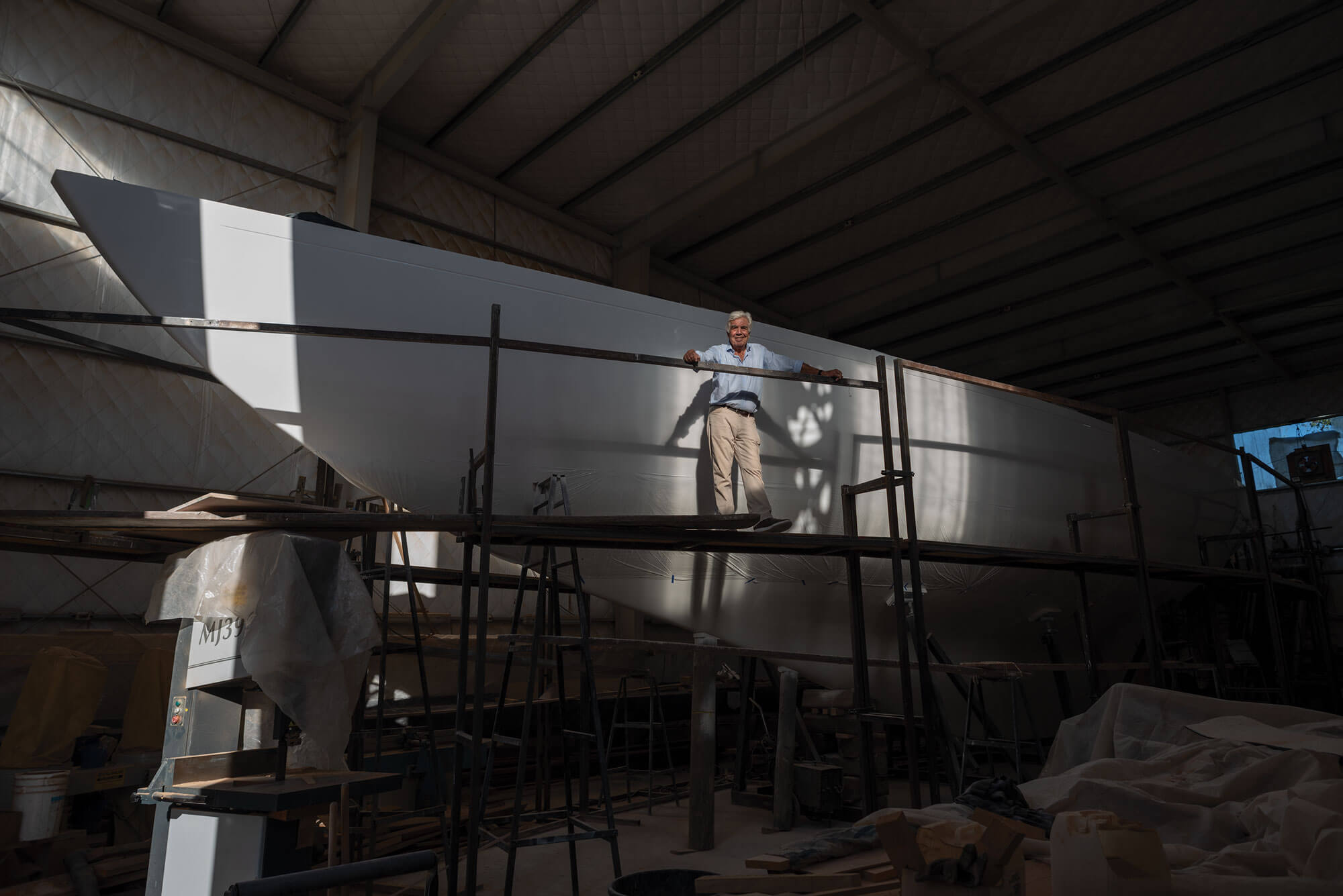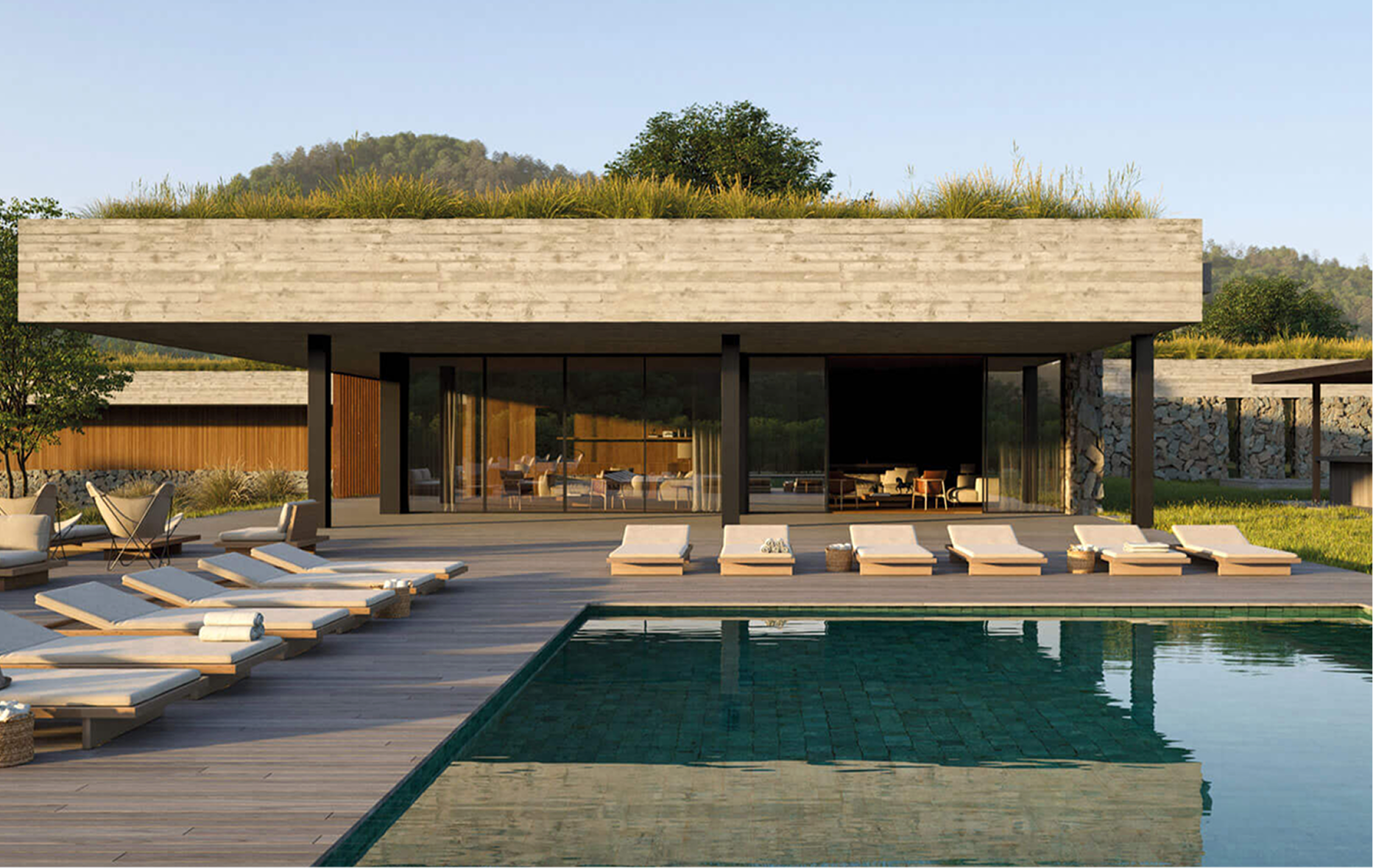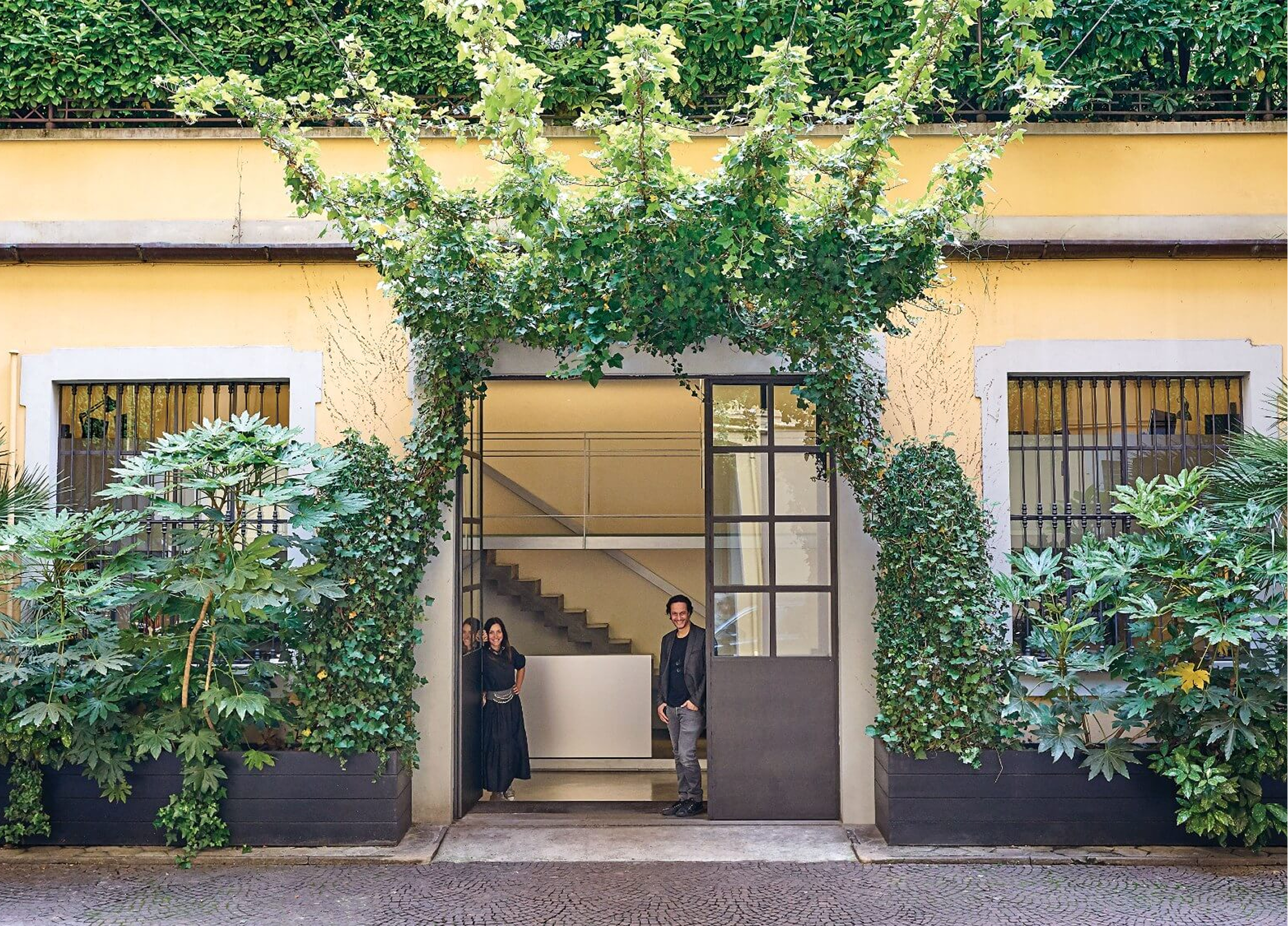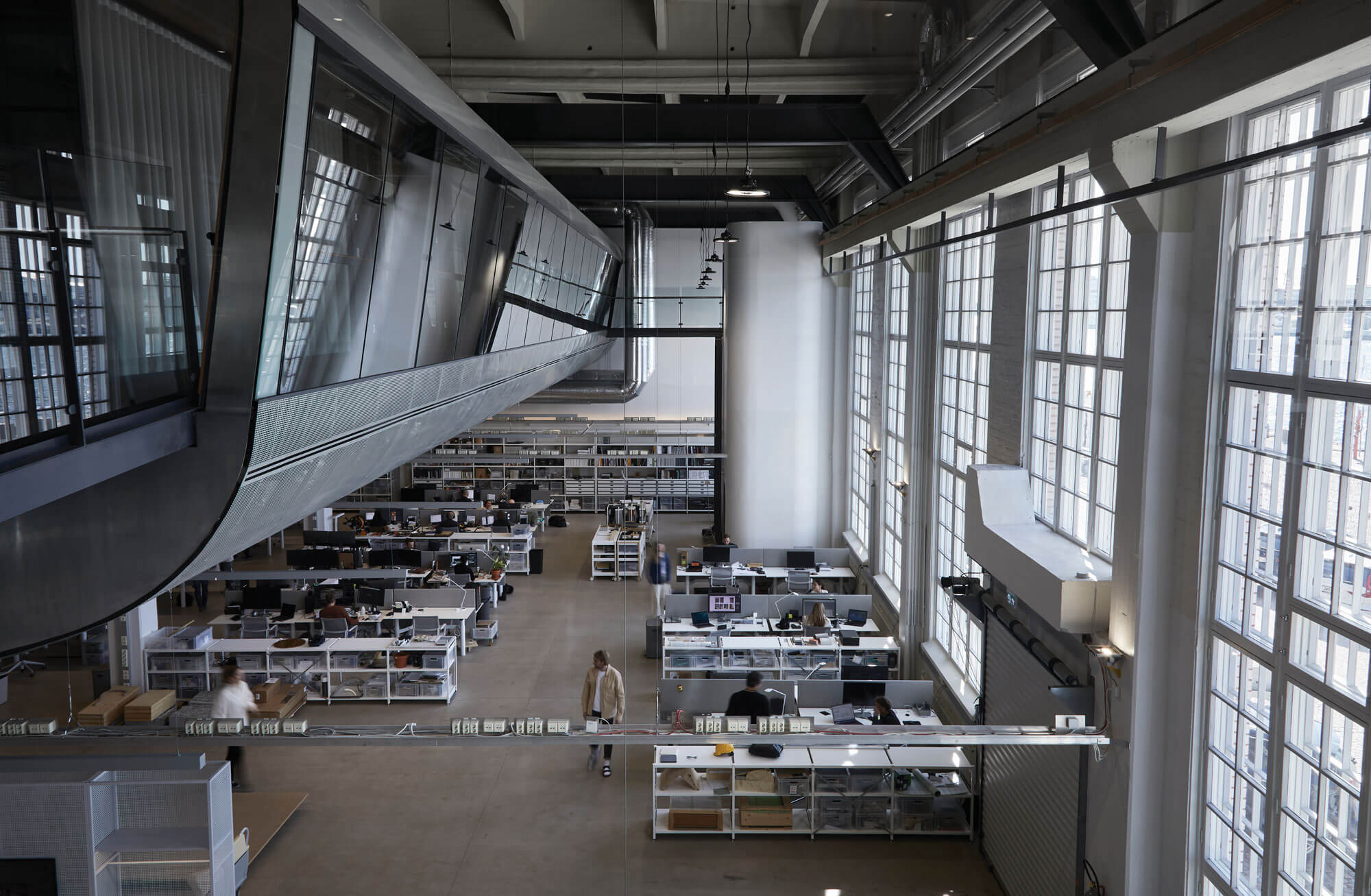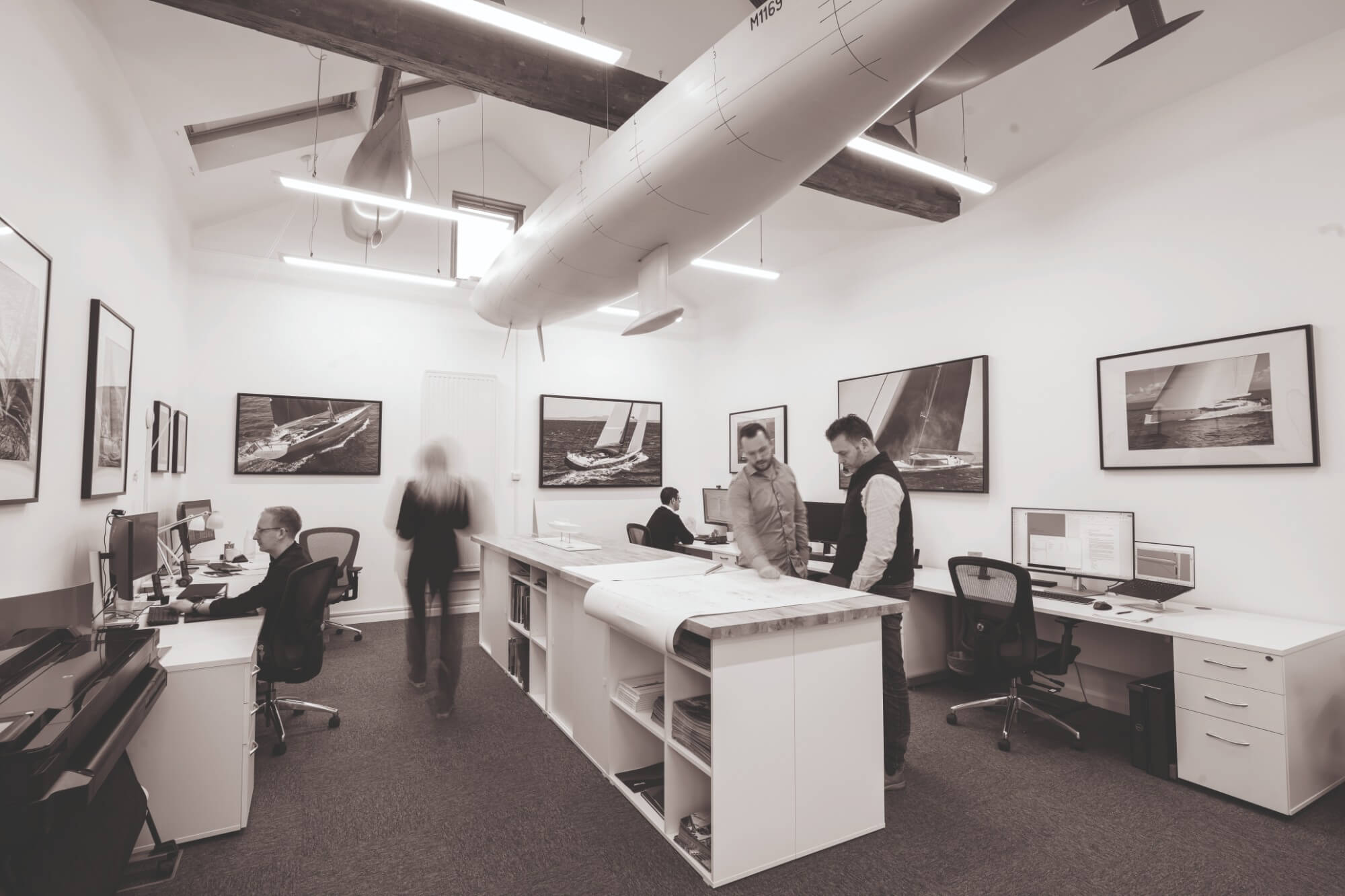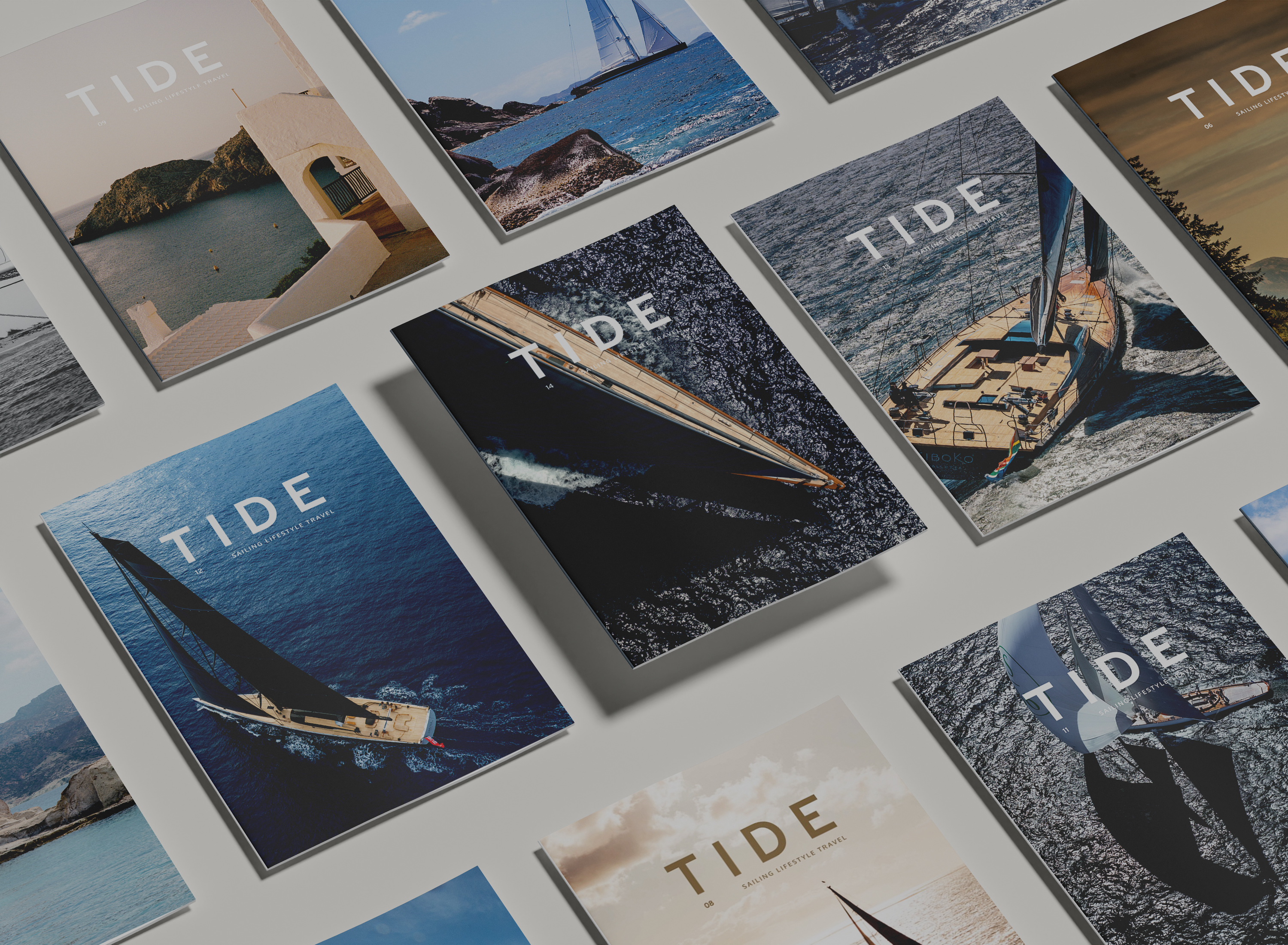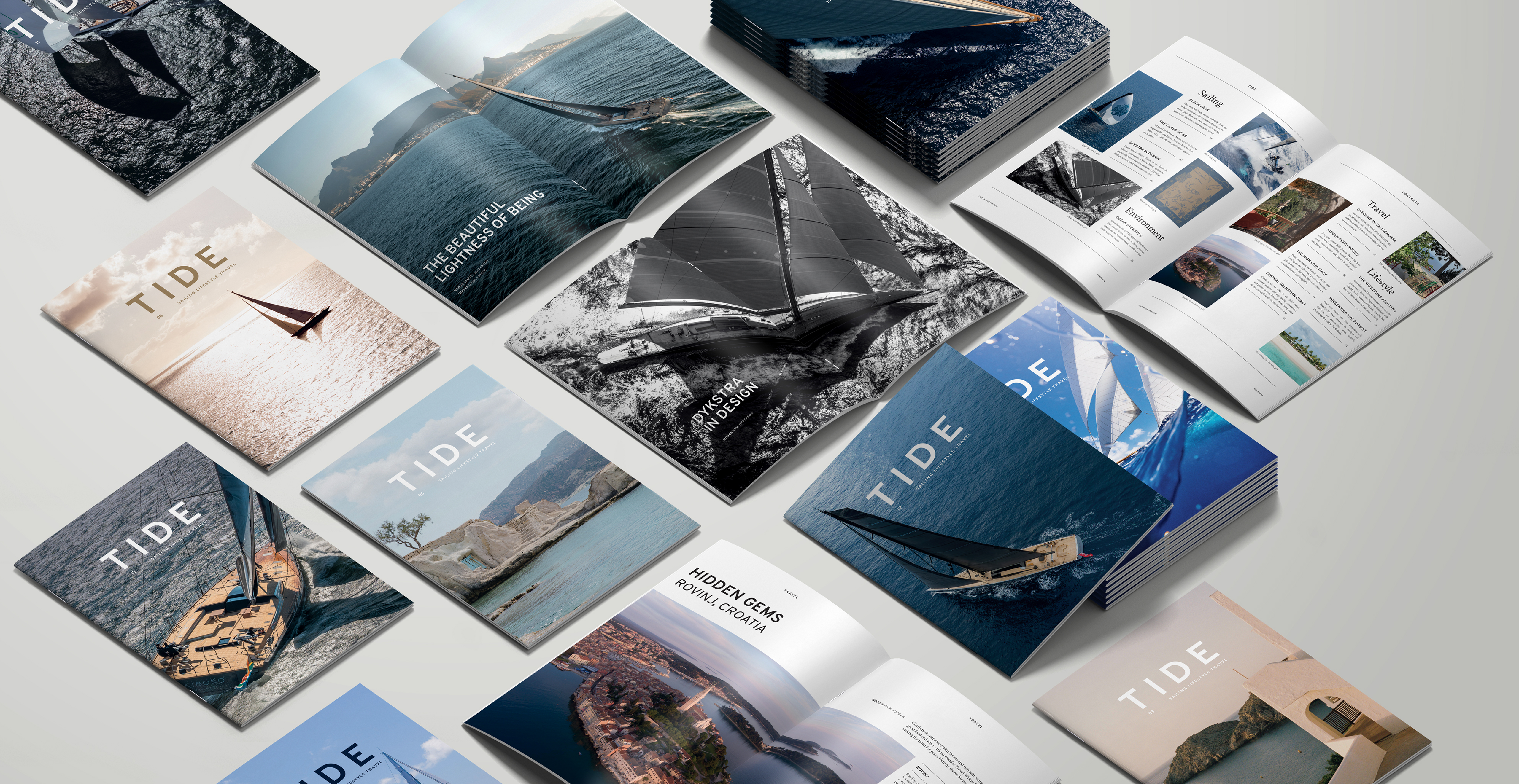I’ve been writing about sailing for more than a decade now, and the one astonishing fact that stood out to me beyond any other is that when the beautiful 42.4 metre Spirit of Tradition ketch Rebecca was first being designed, she had no bow.
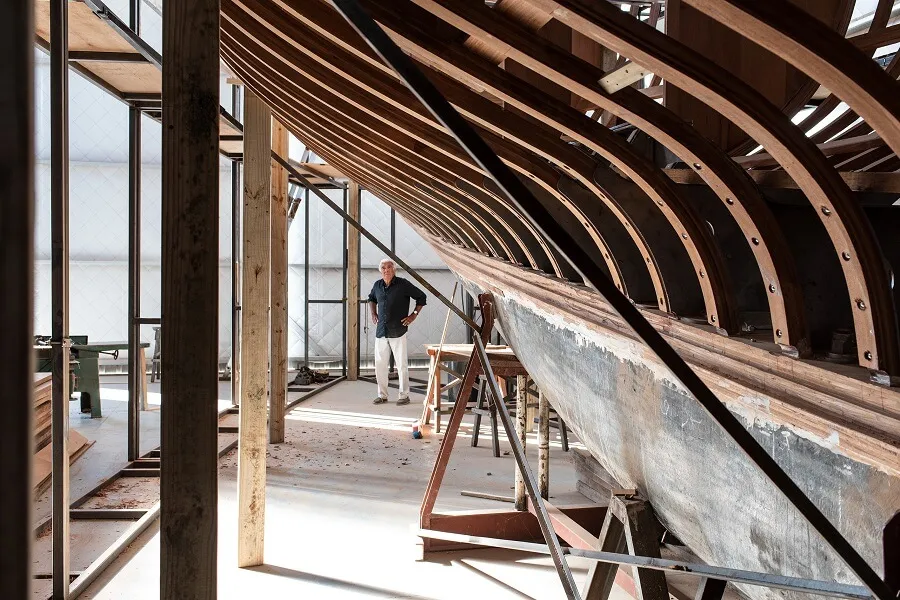
Even the most confirmed landlubber understands that a boat with no bow cannot float, but when the project began, her designer and naval architect Germán Frers and the owner were still in discussion about the final shape of the bow. Unperturbed, Frers started work without one.
Looking at Rebecca today (and considering her class-winning performances in both St Barths and Antigua) you’d have no clue. Her long lines are graceful, natural, streamlined. It’s no wonder why one client hailed Frers as a “famous magician”.
Born in Argentina, Frers followed in the wake of his father, Germán Frers Snr, who started designing yachts in his home country in 1925. Frers Jnr’s first design was a flush-deck 10 metre yawl, Mirage, penned in 1958 when he was 17. After studying Naval Architecture at the University of Buenos Aires and undertaking an apprenticeship with Sparkman & Stephens in New York, he returned to Buenos Aires to take the helm of the family business, Frers Naval Architecture and Engineering, in 1970. Where the father favoured long waterlines and hard chines, the son was drawn to flush decks and aerodynamic lines with rounded deck edges, and this helped him establish a name for himself honing IOR designs, utilising rule loopholes to maximise ratings and produce winners.
His career, spanning eight decades, has been and still is, phenomenal. Frers has pulled countless racers, cruisers and cruiser-racers out of his hat, everything from Maxi Worlds and Louis Vuitton winners to cruising yachts with serious bluewater credentials. At the upper end of the spectrum, he has designed 145 Superyachts and been the naval architect of 156. There have been collaborations with the top yards on, for example, 30.5 metre Wally Y3K, 43 metre Royal Huisman Sea Eagle and 44 metre Persico Marine-built Kauris IV. For Fiat boss Gianni Agnelli he designed the 28 metre black-hulled, black-sailed sloop Stealth, capable of holding 30knots.
And on top of quality, there is quantity. You’d be hard pressed to find a sailor who hasn’t stepped aboard something he drew; through his work for production boatbuilders such as Nautor’s Swan, Hylas, Hallberg Rassy, Beneteau and catamaran builder Ocean Quality Systems there are thousands of German Frers-penned hulls afloat – more than 1,000 of them Swans. To date, with his, his father’s and his own son’s work (his son Mani runs the Milan studio while Germán remains in Argentina), there are more than 10,000 Frers-designs on the world’s seas.
While each boat’s purpose differs, there is a signature clean style to all, with nothing excessive, nothing wasted. His style is “efficient, special, harmonious, based on experience and intuition with good results,” he sums up. It is a methodology that evidently has huge and long-lasting appeal. Even in his 80s, Frers is still in demand, still designing. “I am working on a healthy number of projects, some private and others for companies like Nautor Swan, Hallberg Rassy, Sirena Marine, OQS, Queen Long Marine.”
Given such an illustrious career, there must be plenty of memorable highs hidden up his sleeve. Yet when asked to reveal his proudest career moment, Frers turns diffident. “I have never thought of sailing or my career in those terms. I do enjoy my work a lot and I think (and I hope) I get a lot of endorphins out of it,” he says, before adding wryly: “Needless to say I have also made a good living out of it!” What also gets him up in the morning is “the joy of living, a nice sunny day, the gauchos waiting for a horse ride, and many reasons more”.
Sailing for Frers is anything and everything, from cruising to joining sea trials of new designs to racing. When racing, his preference these days is for classic yachts, often in the Med. “[In] a fleet of rather traditional yachts in a class where I found a niche that allows me to be relatively competitive and have fun sailing with old friends, their sons or relatives and their own family,” he says. “I also sail and race in my home waters, San Fernando, San Isidro and Buenos Aires [and] in the Rio de la Plata and the coast of Uruguay: Colonia, Montevideo, all the way to Punta del Este.”
If he could conjure up his own dream yacht it would, of course, comprise all those design elements he listed as his signature style. “It would be a fast, elegant, comfortable, modern sailing Frers design, named Heroina,” he says. He’d take his family cruising in her. “My favourite areas are generally in the Med – Italy, Spain and France or the Aegean Sea and the Turkish southern coast. Another fantastic place I like very much and go as often as possible, is Brazil, all the way from Florianopolis to Cabo Frio.”
With thoughts turning to the future, no conversation is possible these days without mention of AI. For Frers, advances in technology will hopefully bring good outcomes. “Yacht design has been going through a slow evolution for a couple of hundred years and it has been speeding up and improving for the last 30 years thanks to technological tools and means which have allowed, in conjunction with modern materials, big steps forward,” he says. “Now we have to see what AI would do for yacht design, if it would allow us to continue enjoying the work, sailing the way we do today.”
But, I wonder, will AI ever be able to do what Frers has done: design a yacht without a bow – and make her sail like a charm?


